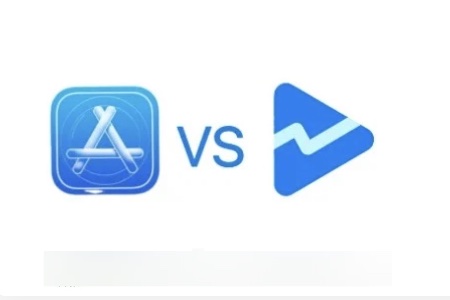At present, there are only two major platforms in the global mobile terminal field, Android and Apple. Today, we will do some basic popular science for developers who are just getting started. Let’s first talk about the differences between Android and iOS developers.
There are many differences between Android and iOS in development, which are mainly reflected in the development environment, programming language, design specifications, release process, etc. The following is a specific comparison:
Development environment
Android uses Android Studio, an integrated development environment (IDE) provided by Google that supports a variety of development tools, such as code editors, performance analysis tools, and simulators.
iOS uses Xcode, which is also an integrated development environment provided by Apple and also includes various tools needed to develop iOS applications.
Programming language
Android mainly uses Java and Kotlin. Kotlin is one of the official languages announced by Google and is popular among developers for its simplicity and reliability.
iOS mainly uses Swift and Objective-C. Swift is a new generation programming language recommended by Apple, and Objective-C is the main language for early iOS development.
Design specifications
Android follows the Material Design design guidelines, which emphasizes layering and animation effects, based on simulating paper and ink in the real world.
iOS follows the Human Interface Guidelines (HIG), which emphasizes simplicity, consistency, and intuitiveness in order to provide users with a seamless experience.
Release Process
Android applications can be released through the Google Play Store, or distributed through third-party app stores or by directly downloading APK files.
iOS applications must be reviewed by the App Store before they can be released. The App Store has strict requirements for the quality and security of applications.
Market Distribution
Android has a larger market share worldwide because of its open source and wide device support, but iOS users are generally considered to have higher spending power.
iOS devices have unified hardware, making development and testing relatively simple; while Android devices are diverse and need to consider more device compatibility issues.
Security and Closedness
iOS is generally considered safer and has less malware due to its closed ecosystem.
Android is more open, allowing users to install applications from unofficial channels, but it is also more vulnerable to malware.
These differences mean that developers need to consider factors such as target user groups, development costs, and maintenance costs when choosing a development platform. For companies that want to cover a wider user base, they may choose to develop applications for both platforms at the same time.
Which app store is easier to publish an app successfully, Android or iOS?
This involves two different platform restrictions, which we divide into visible restrictions and invisible restrictions.
In terms of visible restrictions, iOS has higher requirements than Android, because iOS developers must pay an annual fee of $99, and then must use Apple’s own devices when releasing iOS apps. In addition, Apple has a strict identity review mechanism for individual developers, and face verification has been arranged for several years.
Android’s Google Play only requires a one-time “deposit” of $25, which can be returned when the developer account is closed. Currently, there is no strict liveness detection for individual developers, and most informal developers prefer Google Play.
As for invisible restrictions, the two may be comparable, and even Android’s requirements are slightly higher than iOS’. For developers who operate in a formal and high-quality manner, the restrictions on the iOS platform are obviously smaller than those on Google. After a long period of continuous abuse by violators, the platform’s policies and risk control strategies have reached their peak. Currently, most developers who try to take shortcuts are unable to complete app release and review.


